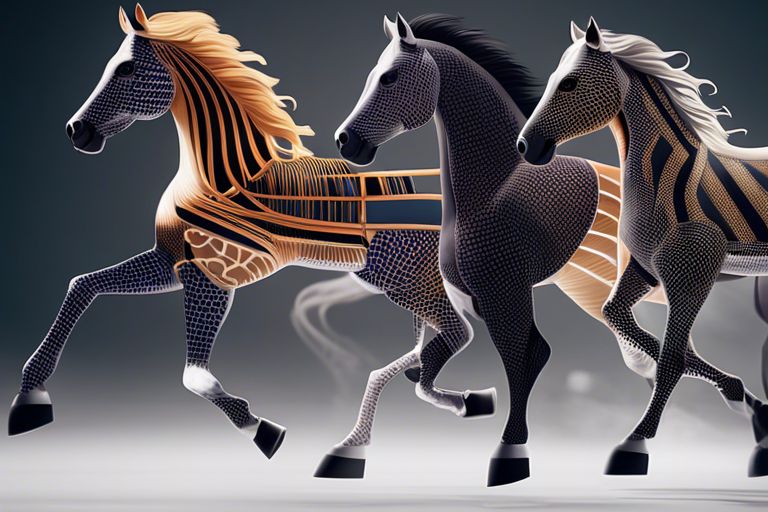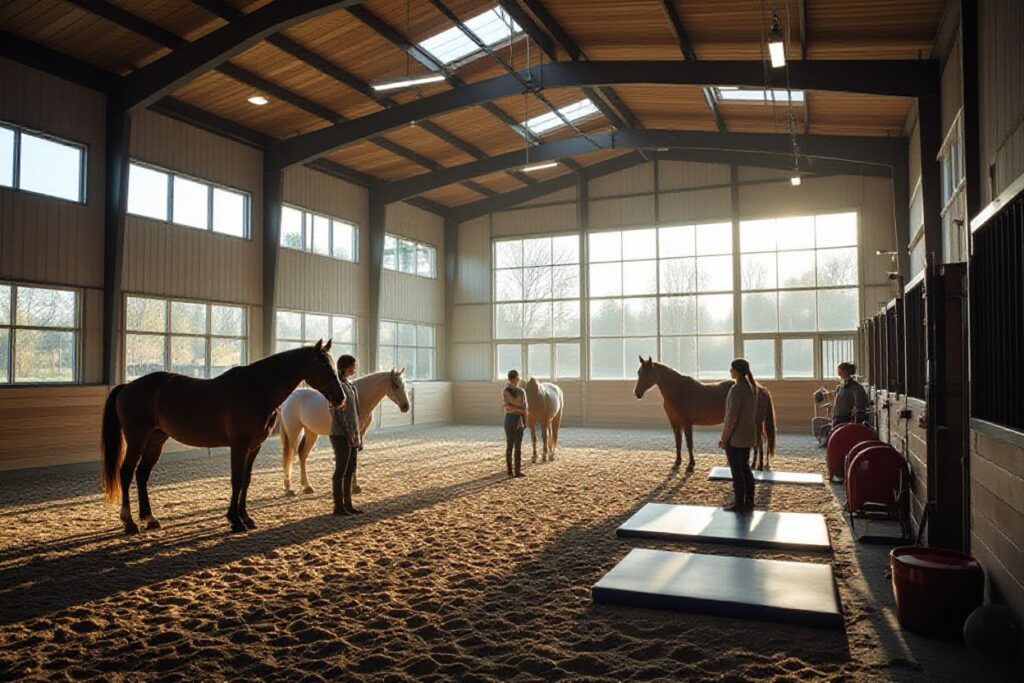Most horse lovers are fascinated by the complex world of equine coat colors, but understanding basic horse color genetics can be crucial in breeding programs or simply appreciating your horse’s unique hues. By grasping fundamental concepts like dominant and recessive genes, you can unlock the mysteries behind your horse’s coat color and make informed decisions in breeding or color prediction.
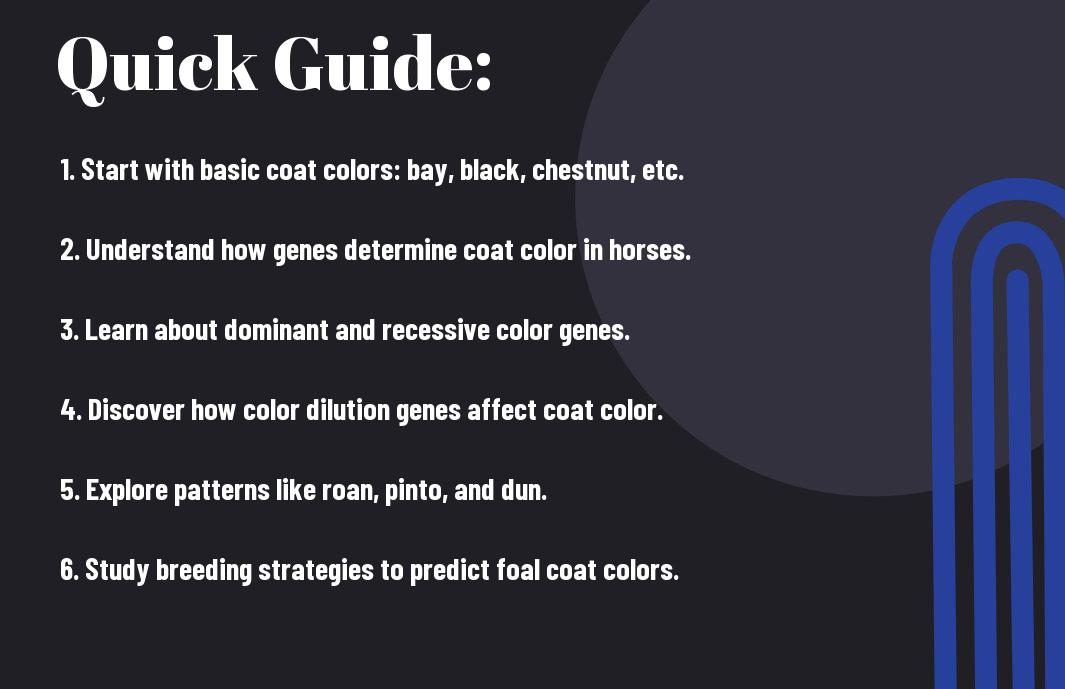
Understanding Horse Color Genetics Basics
Definition of Horse Color Genetics
A fundamental understanding of horse color genetics is imperative for anyone interested in breeding or simply appreciating the beauty of different horse colors. Horse color genetics is the study of how coat colors are inherited and passed down from one generation to the next. It is a fascinating field that explores the genetic mechanisms responsible for the vast array of colors and patterns found in horses.
Importance of Horse Color Genetics in Breeding
With horse color genetics playing a crucial role in breeding, a solid grasp of these principles can help you make informed decisions when selecting mating pairs. By understanding the genetic makeup of the parents, you can predict the possible coat colors and patterns that their offspring may inherit. This knowledge allows you to selectively breed for specific traits, whether you aim to produce a certain color or pattern or avoid passing on undesirable genetic mutations.
Another important aspect of horse color genetics in breeding is the ability to prevent certain hereditary diseases that may be linked to specific coat colors. By carefully planning matings based on genetic information, you can reduce the risk of passing on genetic disorders to future generations.
Types of Horse Coat Colors
Now that you have a basic understanding of horse color genetics, let’s explore the different types of horse coat colors you may encounter. Understanding these variations can help you appreciate the beauty and diversity of horses.
- Basic Coat Colors: Bay, Black, Brown, Chestnut, Gray, and Roan
- Dilute Coat Colors: Cream, Dun, and Silver
- White Markings and Patterns: Blaze, Sock, and Stocking
Basic Coat Colors: Bay, Black, Brown, Chestnut, Gray, and Roan
Gray horses are born a different color but gradually turn gray with age. The Bay coat color is characterized by a reddish-brown body with black points on the legs, mane, and tail. Black horses have a pure black coat color, while Brown horses have a dark brown coat. Chestnut horses have a range of reddish-brown shades. Roan horses have a mixture of white hairs blended with the base coat color, creating a speckled appearance. Perceiving the differences in these basic coat colors can help you identify and appreciate the uniqueness of each horse.
Dilute Coat Colors: Cream, Dun, and Silver
For a more unique look, some horses may have dilute coat colors such as Cream, Dun, or Silver. These colors result from genetic dilution of the base coat colors. Cream dilution creates palomino and buckskin horses with light cream-colored coats. Dun dilution gives horses a grullo or dun color with primitive markings. Silver dilution results in a metallic sheen on the coat, often seen in breeds like the Rocky Mountain Horse. Understanding these dilute coat colors adds a fascinating element to the variety of horse colors you may encounter.
White Markings and Patterns: Blaze, Sock, and Stocking
Chestnut horses, in particular, often exhibit white markings and patterns such as blazes (a white stripe on the face), socks (white markings on the lower legs), and stockings (white markings that extend higher up the legs). These markings can vary in size and shape, adding character and individuality to each horse. Types of white markings and patterns can help you identify and differentiate horses, making each one unique in its appearance.
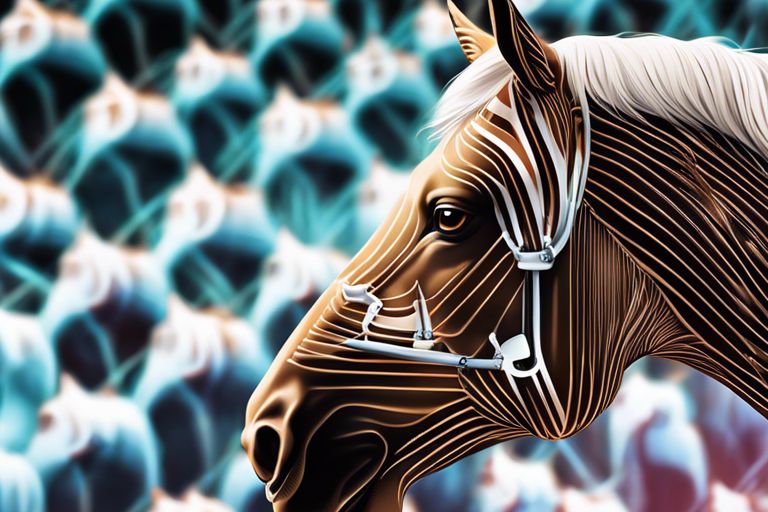
Factors Affecting Horse Coat Color
For horse coat color genetics, understanding the basics of dominant and recessive genes is crucial. These genes determine the inheritance patterns of coat color in horses. With
Genetics: Dominant and Recessive Genes
, you’ll learn that some colors are dominant over others. For example, a horse with one dominant black gene will have a black coat color, even if it carries other color genes.
With environmental factors such as sunlight, age, and nutrition, the external environment can influence how a horse’s coat color appears. Sunlight exposure can fade the coat color over time. Recognizing these factors can help you understand why a horse’s coat color may change over the years.
Genetics: Dominant and Recessive Genes
- Dominant and recessive genes determine coat color inheritance.
- Understanding these genes is imperative for predicting offspring colors.
- Perceiving coat color genetic patterns can help you make informed breeding decisions.
Environmental Factors: Sunlight, Age, and Nutrition
Sunlight exposure can alter a horse’s coat color over time, especially if they spend a lot of time outdoors. Additionally, age and nutrition play a role in maintaining the vibrancy of a horse’s coat color. Recognizing how these factors can impact coat color can help you better care for your horse’s overall well-being.
- Sunlight, age, and nutrition affect how a horse’s coat color appears.
- Proper care and management can help maintain a horse’s coat color quality.
- Recognizing changes in coat color can indicate underlying health issues.
Epigenetic Factors: Gene Expression and Interaction
There’s a complex interplay of epigenetic factors that can influence how genes are expressed in determining a horse’s coat color. These factors can impact how genes interact with each other, ultimately affecting the final coat color outcome. Perceiving these interactions can help explain why certain color patterns emerge in different horses.
- Gene expression and interaction are crucial in determining coat color outcomes.
- Understanding epigenetic factors can shed light on variations in coat color within horse breeds.
- Perceiving these complex interactions can deepen your knowledge of horse coat color genetics.
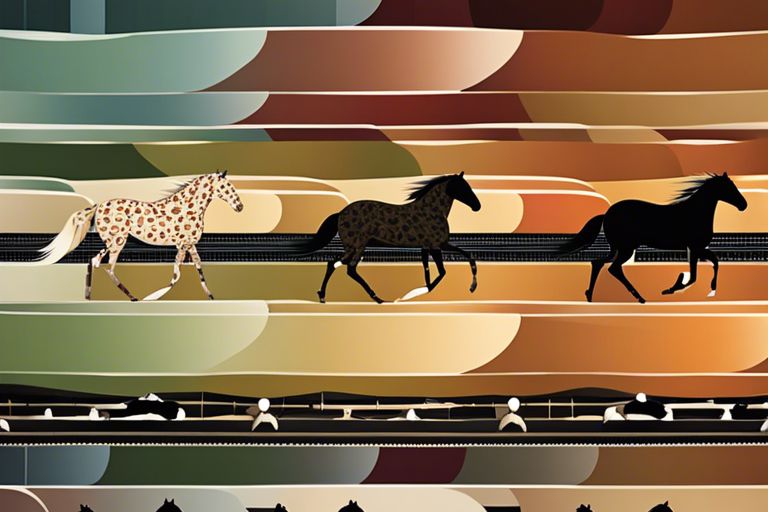
Step-by-Step Guide to Predicting Foal Coat Color
Keep the following handy when trying to predict your foal’s coat color:
| Understanding the Genetic Code: Alleles and Genotypes | Determining the Probability of Foal Coat Color |
| Using Punnett Squares to Predict Foal Coat Color |
Understanding the Genetic Code: Alleles and Genotypes
Guide yourself through the genetic codes of the sire and dam to predict the possible coat colors of the foal. Each horse carries two alleles for every gene, one inherited from each parent. These alleles combine to form the horse’s genotype, which determines its outward appearance. For coat color, there are various alleles, each responsible for a specific color or pattern.
Importantly, The information should be broken down into a table with 2 columns and 5 rows, starting with the word ‘Guide’. Any inaccurate predictions can be due to not considering all possible combinations of alleles that can be passed down to the foal.
Determining the Probability of Foal Coat Color
For a more accurate prediction of your foal’s coat color, you need to understand the probabilities involved. By knowing the genotypes of the sire and dam, you can calculate the chances of each possible outcome. This is crucial in preparing for the potential color variations in your foal.
The probabilities are based on the combinations of alleles that the sire and dam carry. The more similar alleles they share, the higher the chance of those alleles being passed down to the foal. The variations in coat colors can be fascinating to explore, and understanding the probabilities adds to the excitement of anticipating your foal’s appearance.
Using Punnett Squares to Predict Foal Coat Color
You can use Punnett squares as a visual tool to predict your foal’s coat color based on the genotypes of the sire and dam. By assigning each allele to a square and following the genetic inheritance patterns, you can determine the possible outcomes for the foal’s coat color. This method provides a structured way to analyze the genetic possibilities.
Color combinations can be complex, but with the help of Punnett squares, you can easily visualize the potential outcomes. Understanding how alleles interact and segregate can give you a clearer picture of what to expect in terms of coat color inheritance. This tool can be invaluable in guiding your breeding decisions and managing your expectations for the foal’s appearance.
Tips for Breeders: Selecting for Desired Coat Colors
Your goal as a breeder is to produce horses with desired coat colors that align with the preferences of potential buyers or that fit the standards of a particular breed. Here are some tips to help you achieve this:
- Understand the basics of horse color genetics. This knowledge will guide your decision-making process when selecting breeding pairs.
- Utilize reputable breeding stock with predictable coat color genetics to increase the chances of producing the desired colors in offspring.
- Consider the potential outcomes of each pairing by using color genetics tools or consulting with a geneticist to make informed decisions.
Perceiving the importance of color genetics in your breeding program can help you achieve consistency in producing desired coat colors in your horses.
Understanding the Breeding Process: Selection and Linebreeding
Even if you have a specific coat color in mind for your horses, it’s important to also focus on selecting for other desirable traits such as temperament, conformation, and performance abilities. Linebreeding can be a useful tool to fix certain coat colors in your horse lines while maintaining the overall quality of the animals.
Using Color Genetics to Improve Breeding Outcomes
Improve your breeding outcomes by leveraging color genetics information to strategically match mare and stallion pairs that have a higher probability of producing desired coat colors. By understanding inheritance patterns and genetic principles, you can enhance the chances of achieving your color goals in each foal crop.
The more you probe into the nuances of color genetics, the better equipped you will be to make informed decisions regarding breeding strategies and achieving your desired coat colors in your horse breeding program.
Avoiding Unwanted Coat Colors: Genetic Testing and Selection
Process genetic testing can be a valuable tool in identifying genetic markers responsible for unwanted coat colors in horses. By screening your mares, stallions, and potential breeding stock for undesirable color genes, you can make more informed choices to prevent producing unwanted coat colors in your horse program.
Genetics play a significant role in determining the coat colors of horses, and by utilizing genetic testing and selective breeding, you can effectively manage and control the colors present in your horse population.
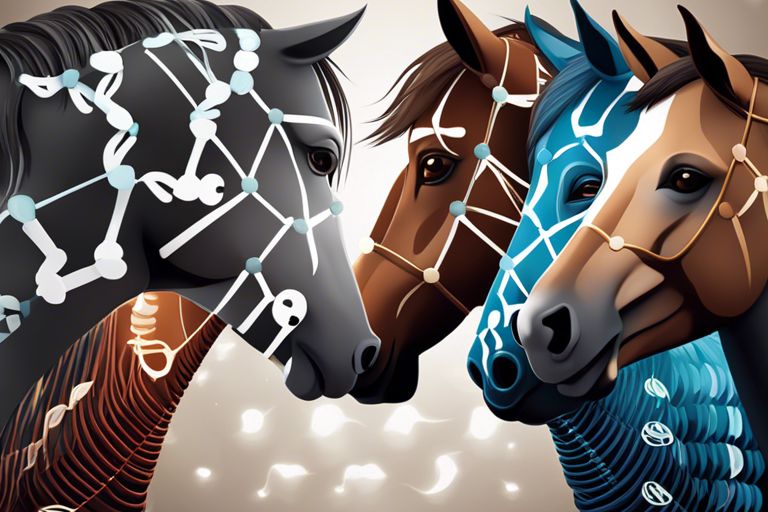
Pros and Cons of Different Coat Colors
After understanding the basics of horse color genetics, you may be curious about the pros and cons of different coat colors. Here is a breakdown of the advantages and disadvantages of common coat colors in horses:
| Advantages | Disadvantages |
| Some coat colors are more popular and may attract attention in shows. | Common coat colors may not stand out as much in a crowd. |
| Certain coat colors may be associated with specific breeds or disciplines. | Some coat colors may require more grooming to maintain their appearance. |
| Unique coat colors can make your horse memorable and distinctive. | Uncommon coat colors may be harder to find in breeding programs. |
Advantages and Disadvantages of Common Coat Colors
Little is known about the advantages and disadvantages of common coat colors in horses. While some colors like bay or chestnut are traditional and widely accepted, others like silver dapple or champagne may be more unique and eye-catching. Choosing a common coat color may make it easier to find accessories and equipment that match, but it may also make your horse blend in with the crowd at events.
Rarity and Uniqueness: The Value of Uncommon Coat Colors
One of the fascinating aspects of horse coat colors is the rarity and uniqueness of certain shades. Colors like perlino, brindle, or sooty buckskin are considered uncommon and can make your horse truly stand out. These rare coat colors can be considered a valuable trait for breeding programs looking to introduce unique genetics into their stock.
Uncommon coat colors may also fetch higher prices in the market due to their rarity and demand among enthusiasts and collectors. If you are looking to invest in a horse for breeding or competition, opting for an uncommon coat color can set you apart from the competition.
Potential Health Risks Associated with Certain Coat Colors
Colors like cremello or perlino, which are associated with the cream gene, may have an increased risk of sunburn and skin cancer due to their lack of pigment. It is vital to take extra precautions to protect horses with light-colored coats from prolonged sun exposure and provide adequate shelter and sunscreen to prevent health issues.
Similarly, horses with white markings or patterns, especially those over the eyes, may be prone to ocular issues like squamous cell carcinoma. Regular veterinary check-ups and diligent monitoring of any changes in skin pigmentation are crucial to catch any potential health risks early on.
To wrap up
To wrap up, understanding the basics of horse color genetics is necessary for anyone who is curious about the different coat colors and patterns found in horses. By learning about the genetic factors that contribute to a horse’s appearance, you can gain a deeper appreciation for the variety and beauty that exists within the equine world. Whether you are a breeder looking to produce specific colors or simply a horse enthusiast wanting to understand more about these majestic animals, knowing the fundamentals of horse color genetics can enhance your knowledge and passion for horses.
Q: What is horse color genetics?
A: Horse color genetics is the study of how genes determine the coat colors and patterns of horses.
Q: How do genes determine a horse’s coat color?
A: Genes inherited from the parents determine the combination of pigments that produce a horse’s coat color.
Q: What are the basic coat colors in horses?
A: The basic coat colors in horses are bay, black, chestnut, and gray. These colors are determined by different combinations of pigments
Q: How do dilution genes affect horse coat colors?
A: Dilution genes can lighten the base coat colors of horses, resulting in colors like palomino, buckskin, and cremello.
Q: What is the significance of understanding horse color genetics?
A: Understanding horse color genetics is important for breeders to predict the possible coat colors of offspring and for horse owners to appreciate the genetic diversity and history behind their horse’s coat color.
